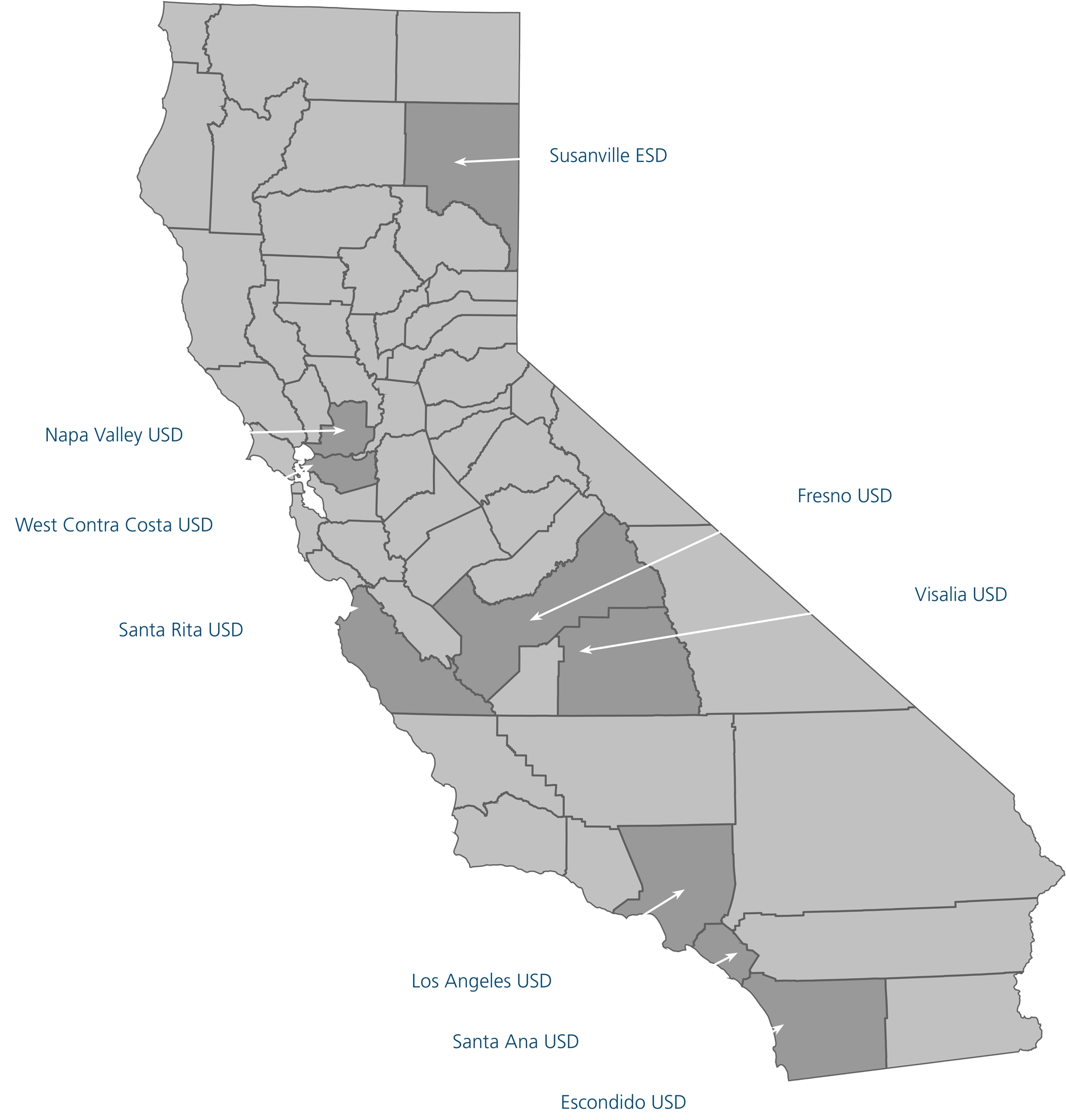The ELA has continued to provide a unique but essential statewide perspective in a variety of legal cases impacting school districts and COEs. For example, in The Legislature of California v. Weber (Hiltachk), a California Supreme Court case, the ELA filed an amicus brief supporting the Legislature’s successful challenge to the placement of a controversial initiative measure — the Taxpayer Protection Act (TPA) — on the November 2024 ballot. The Court found that the TPA could not be placed on the ballot because it proposed extensive and unconstitutional revisions to California’s basic governmental framework, many of which would have negatively impacted California’s school districts and COEs.
Additionally, in O’Connor-Ratcliff v. Garnier, the ELA’s positions detailed in an amicus brief filed with the U.S. Supreme Court were proven correct when the Court vacated a Ninth Circuit decision that was adverse to the defendant school board members. The decision created a new, more restrictive, two-part test that aligned with the ELA’s arguments to define when a board member’s use of a private social media account might constitute state action for purposes of determining a First Amendment violation. The Court remanded the case to the Ninth Circuit for application of the new test to the facts of the case. The new test appropriately acknowledges that public officials are also private citizens with their own individual constitutional rights.
In addition to the ELA’s work detailed above, I announced an exciting ELA benefit at the 2023 Annual Education Conference. ELA members may now request funding from the ELA, subject to a cap, to finance litigation of statewide importance in state or federal courts to which they are a party.
With its statewide membership and focus on issues with statewide impact, the ELA is in a unique position to advance and defend the interests of public education and, with your support, stands ready to do so in the coming year.
If you have any questions about the ELA or its benefits, please contact ELA staff at (800) 266-3382 or legal@csba.org.

CEO & Executive Director,
California School Boards Association
Contents
- California Environmental Quality Act (CEQA) Requirements
- Childhood Sexual Abuse Claims AB 218 Lookback Provisions
- Charter School Contractual Issues
- State and Local Governance
- Charter School Petition Appeals
- Discrimination/Protected Employment Classes Under PERB
- Salary Schedule Placement of Certificated Employees
- Special Education — Standard for FAPE
- First Amendment
the ELA worked directly In 2024*


What is the
Education Legal Alliance?
CSBA’s Education Legal Alliance (ELA) is a consortium of school districts, county offices of education and Regional Occupational Centers/Programs that voluntarily joined together in 1992 to create a powerful force to pursue and defend a broad spectrum of statewide public education interests before state and federal courts, state agencies and the Legislature. The ELA initiates and supports legal activities in issues of statewide significance to all California schools. Working with school attorneys, the efforts of the ELA have proven highly effective in protecting the interests of schools and the students they serve. Potential matters are reviewed and approved by a broad-based steering committee of board members, superintendents and education leaders. There is also a legal advisory committee of noted school law attorneys to help provide legal analysis and recommendations to the steering committee.
The ELA is funded exclusively by contributions from its members, who are also members of CSBA.
- The ELA files amicus briefs and letters in court to support its members on legal issues of statewide importance.
- The ELA initiates litigation on various issues of statewide importance and often looks to its members to serve as co-plaintiffs in those cases.
- The ELA weighs in on legislation that impacts its members on issues of statewide importance.

Committee

CSBA President
Santa Clara USD

CSBA President-elect
Monterey Peninsula USD

CSBA CEO & Executive Director

CSBA Director, Region 4
Eureka Union SD

CSBA Director, Region 21
Los Angeles USD

Delegate, Region 15
Garden Grove USD

County Superintendent
Placer COE

Superintendent
Sweetwater Union HSD

Superintendent
Garden Grove USD

Superintendent
Roseville City SD

Consultant

Consultant

Committee
Staff

Lozano Smith

Parker & Covert LLP

Dannis Woliver Kelley

Fagen Friedman & Fulfrost LLP

Atkinson, Andelson, Loya,
Ruud & Romo

Orange County
Department of Education

Deputy General Counsel

Deputy General Counsel

Associate General Counsel

Associate General Counsel

Paralegal
Committee

Lozano Smith

Parker & Covert LLP

Dannis Woliver Kelley

Fagen Friedman & Fulfrost LLP

Atkinson, Andelson, Loya,
Ruud & Romo

Orange County
Department of Education
Staff

Deputy General Counsel

Deputy General Counsel

Associate General Counsel

Associate General Counsel

Paralegal

CALIFORNIA ENVIRONMENTAL QUALITY ACT (CEQA) REQUIREMENTS
Santa Rita Unified School District v. City of Salinas (Rexford Title, Inc. et al) – California Supreme Court (Case No. S281912)
MEMBER(S) INVOLVED: Santa Rita Unified School District
IMPORTANCE OF STATEWIDE ISSUE:

CHILDHOOD SEXUAL ABUSE CLAIMS AB 218 LOOKBACK PROVISIONS
West Contra Costa Unified School District v. The Superior Court of Contra Costa County – California Court of Appeal, First District (Case No. A169314)
MEMBER(S) INVOLVED: West Contra Costa Unified School District
IMPORTANCE OF STATEWIDE ISSUE:

CHARTER SCHOOL CONTRACTUAL ISSUES
Orange County School of the Arts v. Santa Ana USD – California Court of Appeal, Second District (Case No. B332826)
MEMBER(S) INVOLVED: Santa Ana Unified School District
IMPORTANCE OF STATEWIDE ISSUE:

MEMBER(S) INVOLVED: All California school districts and county offices of education
IMPORTANCE OF STATEWIDE ISSUE:

California School Boards Association’s Education Legal Alliance v. State Board of Education – California Court of Appeal, Third District (Case No. C099069)
MEMBER(S) INVOLVED: Napa Valley Unified School District
IMPORTANCE OF STATEWIDE ISSUE:

Visalia USD v. Public Employment Relations Board – California Court of Appeal, Fifth District (Case No. F084032)
MEMBER(S) INVOLVED: Visalia Unified School District
IMPORTANCE OF STATEWIDE ISSUE:

George v. Susanville Elementary School District – California Court of Appeal, Third District (Case No. C098772)
MEMBER(S) INVOLVED: Susanville Elementary School District
IMPORTANCE OF STATEWIDE ISSUE:

A.O. v. Los Angeles Unified School District – Federal Court of Appeals, Ninth Circuit (Case Nos. 22-55204, 22-55226); U.S. District Court, Central District (Case No. 2:21-cv-00757-ODW-PD)
IMPORTANCE OF STATEWIDE ISSUE:

O’Connor-Ratcliff v. Garnier – United States Supreme Court (Case No. 22-324)
IMPORTANCE OF STATEWIDE ISSUE:

